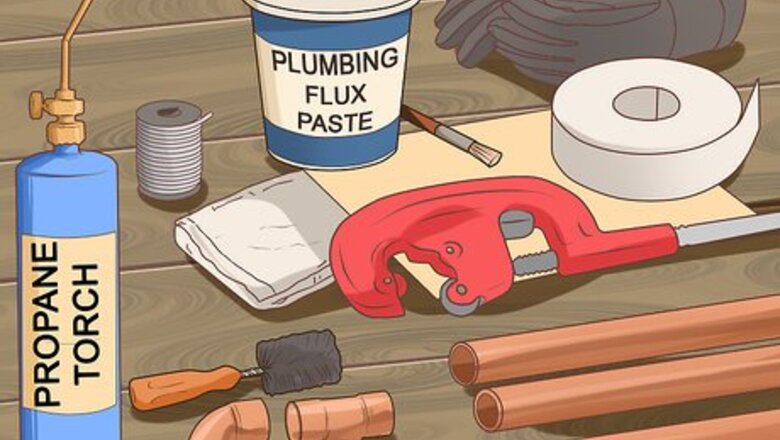
views
Preparing Your Copper Pipe
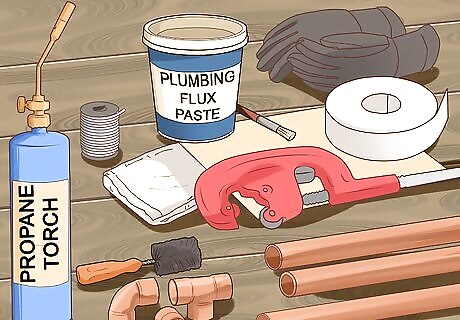
Gather your tools and materials. Having your equipment at the ready will ensure your pipe-sweating job goes as smoothly and quickly as possible. To properly sweat a copper pipe, you'll need: Copper connectors Copper pipe Insulated gloves (optional; recommended) Lead-free plumbing solder Pipe cutter Pipe plug (optional; to prevent water trickles) Plumbing flux paste Propane torch Sandpaper or emery cloth Wire brush

Evaluate your pipe and fittings. Construction materials vary considerably depending on purpose, and using the wrong gauge pipe or fitting can lead to a plumbing fiasco. If you are unsure which to use, check city code to determine your piping needs more exactly, but the following descriptions should help you evaluate whether your pipe is suitable for your job: Copper pipe has three different classes -Type M, is thin walledType L, is medium walled, and is usually ideal for home useType K, is thick walled Copper pipe fittings come in three basic types -Category 1, for making bends or turns in your pipeCategory 2, for joining or branching pipeCategory 3, which includes couplings and adapters for your pipe.
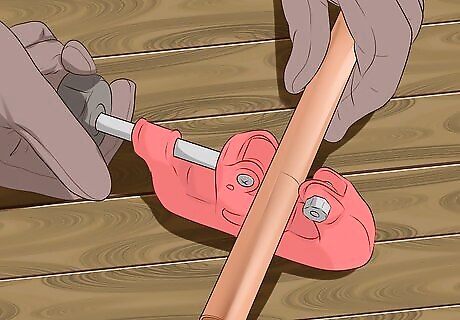
Cut your copper pipe. You'll need your pipe to be at the desired length for your plumbing project before you do anything. To accomplish this goal you should use a pipe cutter, which can be rented or purchased from most home improvement retailers. You may want to consider a pipe cutter that has guides, as these will help you accomplish a clean, straight cut that is free of rough edges. Tighten your pipe cutter, which should be shaped similar to a C-clamp, so that the pipe is firmly held by the cutter. Turn your cutter so that it scores the pipe as it rotates. Tighten your cutter again, and then turn it several more times until your pipe is severed. Depending on the thickness of your pipe and quality of your cutter, you may need to tighten the cutter a third time.
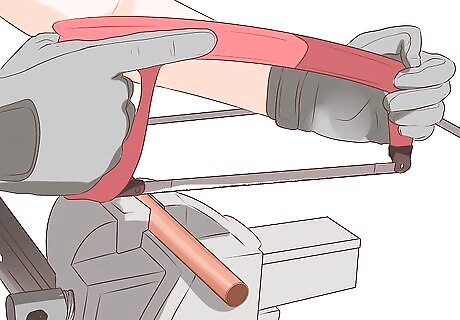
Make use of secondary cutting measures. If you don't have a pipe cutter available, there are a variety of tools you can use in place of it, though using a pipe cutter will often yield the best results. In a pinch, you can also use: A hacksaw An abrasive wheel A portable or stationary band saw
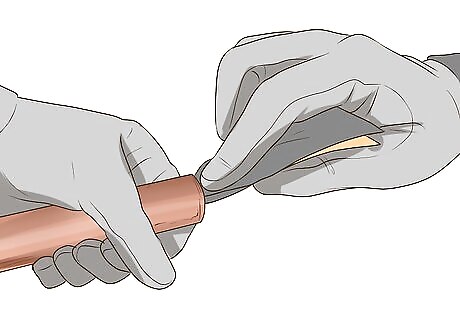
Smooth any rough edges and clean loose shavings. You can smooth burred, sharp, or rough edges with fine grain sandpaper, an emery cloth, or even steel wool. After your pipe is smooth, you should clear any loose metal shavings left over from your pipe cutting with a clean rag. When working with jagged or burred pipe, you may want to wear work gloves to protect against cuts and slivers.
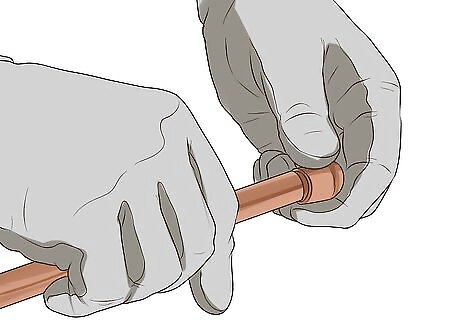
Test the fit of your components. You'll want to see if the copper piping and connectors fit together before going to the trouble of by assembling everything or applying flux. Insert the tube end into the fitting cup, and then visually examine it with your other parts to be sure these line up and fit properly. If you plan to work on a functioning copper pipe, be sure to turn off the water main or cut off valve.

Drain water from the pipe and dry it. You can achieve this by tipping the pipe, though in some cases this might not be possible. If you cannot tip-drain your pipe, use a dry, clean cloth or some paper towel to absorb all liquid near where you will be sweating the pipe.
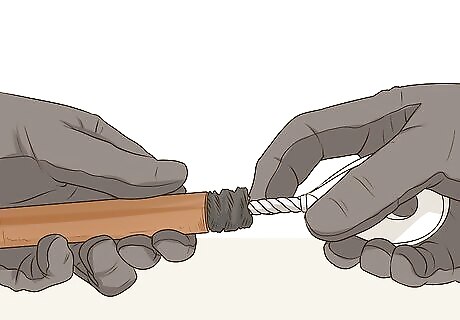
Make your pipe shine. This is necessary to promote the best possible joining between your component parts. Take your wire brush, and clean the pipe until it shines brightly. Give the joint ends the same treatment, until all the ends you will be sweating have a bright sheen. After cleaning the pipe, wipe away any grit with a clean rag. Cleaning the pipe removes oxidation buildup from the metal, which can cause a weak bond. If you are connecting to a valve or other fixture, be sure it is open so you don't melt or warp any internal seals.
Administering Your Flux

Protect yourself with gloves. Although flux for potable fixtures is specifically intended to be non-toxic to your drinking water, flux that has yet to be heat treated can be harmful if it gets in your eyes or any open cuts. You should wear gloves when applying flux to your pipe.

Prevent trickles with a pipe plug. You shouldn't attempt to solder pipes that have residual water, as even a small amount of water can make your efforts futile. If you notice a trickle of water in your line, push a pipe plug into the line to stop the flow of water. In the event that you don't have a plug on hand, an old trick used a wad of soft, white bread in the place of a plug to briefly halt the water. This technique does work, but has a minute chance of clogging aerators or valves when the line is turned on and the bread flushed.
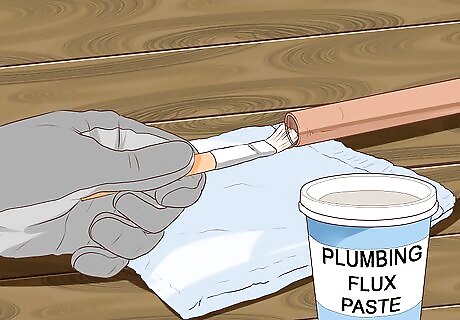
Apply flux to the joint you will sweat. Copper pipe will not bond with the solder you will later apply to adhere your pipes together unless it is chemically treated with flux. Remember not to apply flux with your bare hands, as contact with your eyes, mouth, or open cuts could expose you to unsafe chemicals. Brush your plumbing flux paste on the outside of your pipe to prepare it for soldering. Flux creates a clean surface for the solder, which will bond your copper components together. Only a small amount of flux needs to be applied. Wipe away excess flux with a clean cloth.
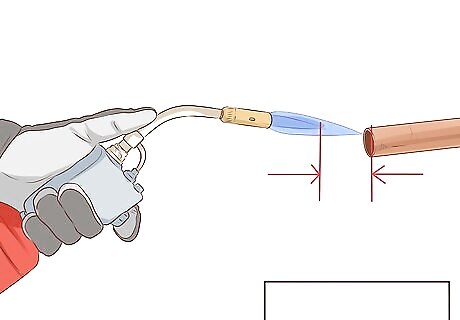
Heat your fitting. You'll need to use your torch for this purpose. Hold your torch about 2 inches (5.1 cm) away from the fitting and pass it evenly over the part for about 10 to 20 seconds to warm the part and the flux. As the flux melts, it will first get shiny, then the copper should darken, and finally the flux should begin to sizzle and smoke slightly. This indicates that the pipe is ready for soldering. If you are inexperienced with working with a torch, especially to heat metal, you should wear insulated gloves to protect from accidental burns. Be careful to avoid burning your forearm, or any other part of your body, on the heated pipe, which will be hot to the touch. Focused or extreme heat is not necessary to melt your flux; the paste will melt at a relatively low temperature.

Assemble the connecting pieces. Again, taking care not to burn yourself on a heated part, you should insert the tube end into the fitting cup firmly until you feel the tube come to rest against the base of the cup. Twist your pipe slightly to spread the flux evenly inside the joint.

Reheat the entire fitting. Now that your pieces are joined, you'll want to heat these again to prepare for the application of solder. Pass your torch evenly over the copper of the fitting. Unevenly heated copper could cause uneven melting of your solder and compromise your watertight seal.
Soldering Your Copper Pipe
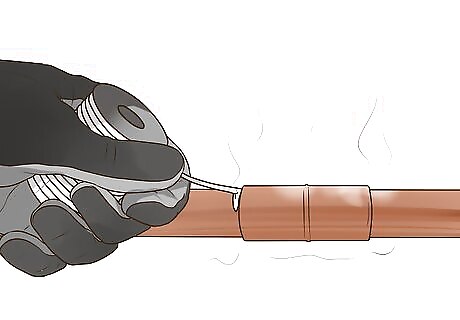
Test your fitting to verify proper soldering temperature. You do not want to overheat your pipe and you should avoid applying your torch directly to your flux or solder as well. You can test to see if your pipe is ready for the solder by holding the solder to the pipe. If the solder runs, your pipe is at the right temperature. If your fitting glows or turns blue, you have applied too much heat and will have to wait for it to cool before trying again.
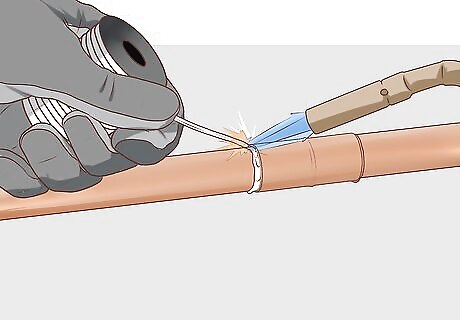
Begin to solder. Remove the heat and apply lead-free plumbing solder to the parts of your fitting where one part of the copper fits into another. Maneuver your solder so that it runs into the fit, continuing to apply the solder until it completely seals all gaps in the fitting the entire way around the pipe. If the joint forms a t-junction, begin at the base, move up to the top, and then down the other side. If the joint is vertical, move the solder around the joint, covering it evenly. If the copper is blackened or the solder beads, appears discolored, or drips out, your pipe may be too hot. Never use acid core solder for sweating copper pipe.
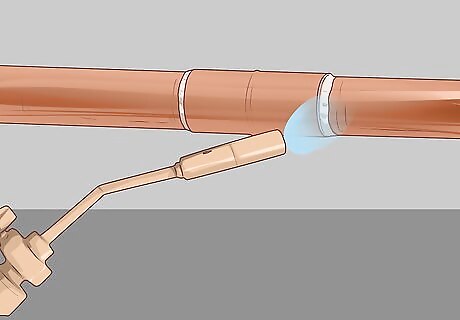
Reheat complex joints. If you are new at sweating a pipe and work slowly, you may have to reheat part of a t-joint or elbow if your copper pipe has lost too much heat from its first torching. To protect any joints you have already soldered, place a thoroughly damp cloth on the parts you have already soldered, then carefully apply your torch to the part yet to be done.

Clean the soldered joint. This can be done simply by brushing a little more flux paste while the copper remains warm. Then you can wipe your newly sweated joint clean with a cloth. Do not try to cool the pipe rapidly with water or you may damage the joint. Do not tighten the fixture you are soldering or move the joint until it has fully cooled.
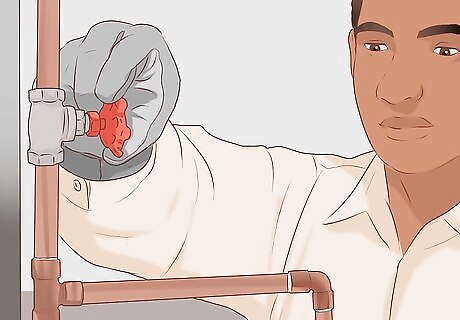
Check for leaks in your pipe. After your copper has fully cooled and you've restored the flow of water to the line, leaks or drips mean you'll have to repeat the process again. Unfortunately, you will not be able to fix the problem by simply adding more solder to the joint, and will have to reheat the pipe, pull the joint apart, clean off previously applied materials, and start from the beginning.

















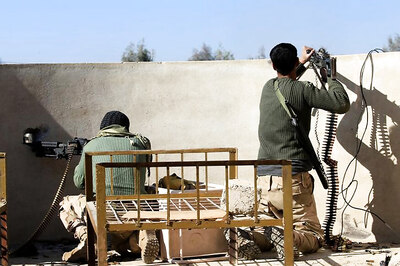


Comments
0 comment